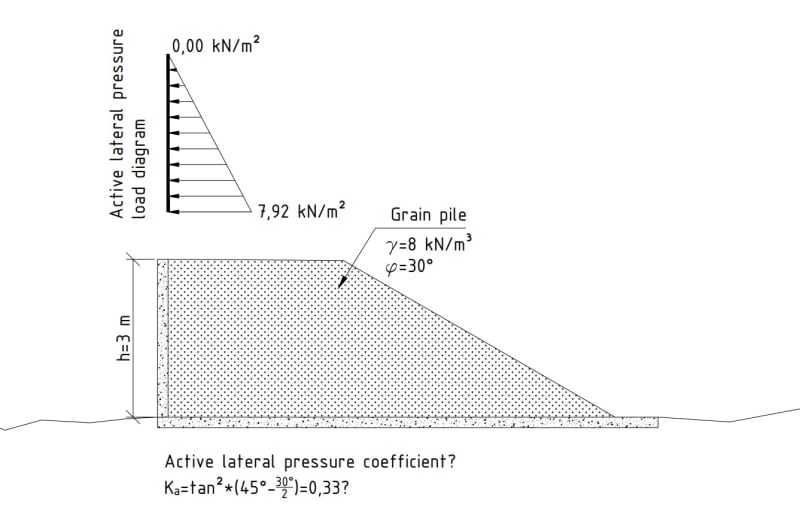nivoo_boss
Structural
- Jul 15, 2021
- 137
Hey everyone!
So I have this structure where grain is going to be piled against the bay walls. The walls are 3 m high. Try to ignore the simple wall and floor on the drawing, I'm only looking for help to determine the lateral load on the walls from the grain.
My local engineer's handbook gives an average density for grain 8 kN/m³ and an angle of repose of 30°. Perhaps you guys have some experience on what sort of lateral pressure coefficient I should use for a material such as grain? On the drawing I used the usual Rankine's active lateral pressure coefficient for soils, but I'm not sure how appropriate it is for grain.
Anyway, the drawing is below. Any help is appreciated.

So I have this structure where grain is going to be piled against the bay walls. The walls are 3 m high. Try to ignore the simple wall and floor on the drawing, I'm only looking for help to determine the lateral load on the walls from the grain.
My local engineer's handbook gives an average density for grain 8 kN/m³ and an angle of repose of 30°. Perhaps you guys have some experience on what sort of lateral pressure coefficient I should use for a material such as grain? On the drawing I used the usual Rankine's active lateral pressure coefficient for soils, but I'm not sure how appropriate it is for grain.
Anyway, the drawing is below. Any help is appreciated.


